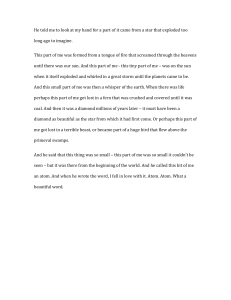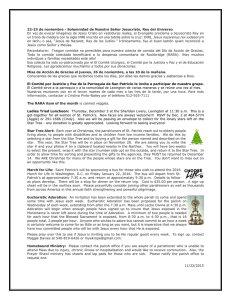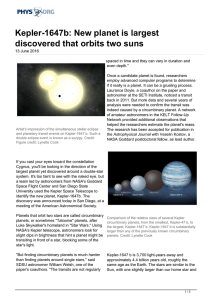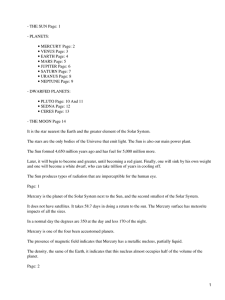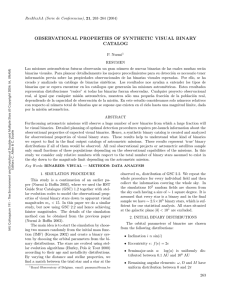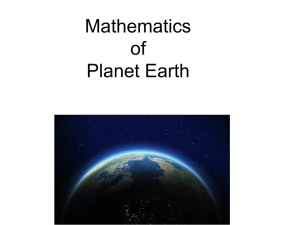Title of PAPER - University of Leicester
Anuncio
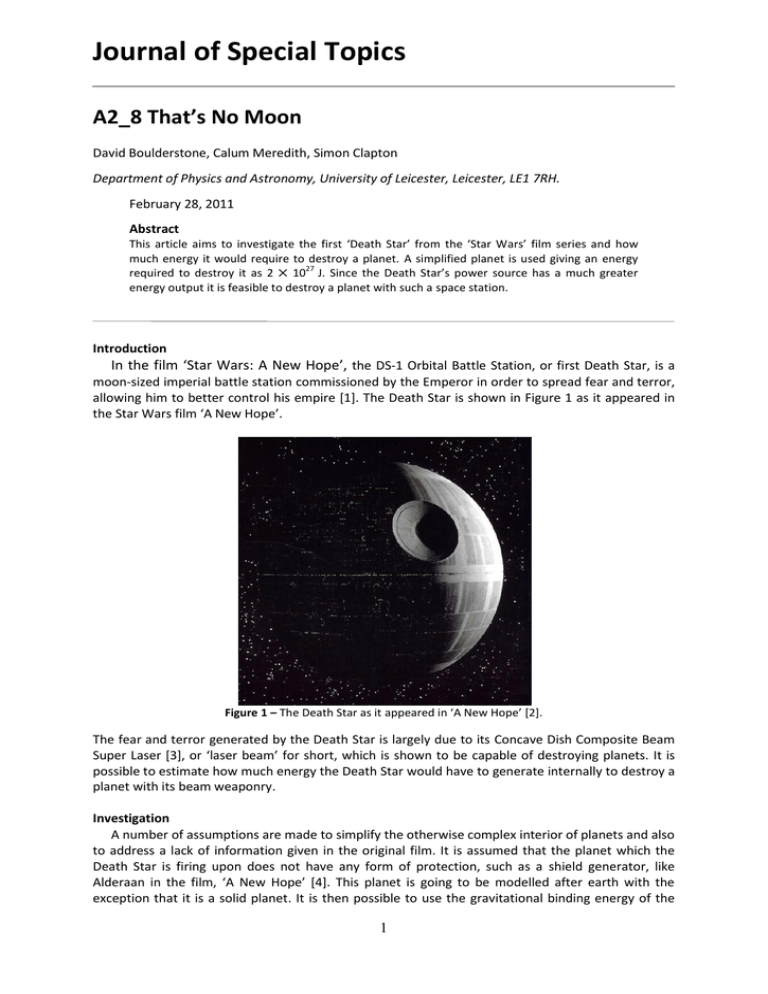
Journal of Special Topics A2_8 That’s No Moon David Boulderstone, Calum Meredith, Simon Clapton Department of Physics and Astronomy, University of Leicester, Leicester, LE1 7RH. February 28, 2011 Abstract This article aims to investigate the first ‘Death Star’ from the ‘Star Wars’ film series and how much energy it would require to destroy a planet. A simplified planet is used giving an energy 27 required to destroy it as 2 ⨉ 10 J. Since the Death Star’s power source has a much greater energy output it is feasible to destroy a planet with such a space station. Introduction In the film ‘Star Wars: A New Hope’, the DS-1 Orbital Battle Station, or first Death Star, is a moon-sized imperial battle station commissioned by the Emperor in order to spread fear and terror, allowing him to better control his empire [1]. The Death Star is shown in Figure 1 as it appeared in the Star Wars film ‘A New Hope’. Figure 1 – The Death Star as it appeared in ‘A New Hope’ [2]. The fear and terror generated by the Death Star is largely due to its Concave Dish Composite Beam Super Laser [3], or ‘laser beam’ for short, which is shown to be capable of destroying planets. It is possible to estimate how much energy the Death Star would have to generate internally to destroy a planet with its beam weaponry. Investigation A number of assumptions are made to simplify the otherwise complex interior of planets and also to address a lack of information given in the original film. It is assumed that the planet which the Death Star is firing upon does not have any form of protection, such as a shield generator, like Alderaan in the film, ‘A New Hope’ [4]. This planet is going to be modelled after earth with the exception that it is a solid planet. It is then possible to use the gravitational binding energy of the 1 That’s No Moon, February 28, 2011. target planet to estimate the amount of energy required to be supplied to the Death Star’s laser beam in order to destroy it. For a spherical mass with uniform energy density, the gravitational binding energy U is given by [5]: 𝑈= 3𝐺𝑀𝑝2 , 5𝑅𝑝 (1) where Mp is the mass of the planet and Rp is the radius of the planet. The energy required to destroy the planet in question is 2.25 ⨉ 1032J. However, the destruction of large planets such as Jupiter can require much larger energy demands. By using equation (1) but with Jupiter mass and radius we can estimate this energy to be 2 ⨉ 1036J. Discussion Since the death star had a very large ‘hypermatter’ reactor, which possessed an output equal to that of several main-sequence stars [6]. It seems reasonable that it can output the required energy to power the ‘laser beam’ weapon. This is because most main sequence stars output far more energy by nuclear fusion than required by the weapon. For example the Sun outputs 3 ⨉ 1026 J s-1[7]. Unfortunately a greatly simplified model of a planet was used to estimate the energy required to destroy it. However, with some simple checks we see that this was reasonable. Since the Death Star outputs energy equal to several main-sequence stars, even if the actual composition of earth is used in equation (1), the value yielded is only a few orders of magnitudes larger and the death star can still easily afford to output that energy due to its tremendous power source. However as mentioned above Jupiter requires much greater energy demands which would put considerable strain on the Death Star. To destroy a planet like Jupiter it would probably have to divert all remaining power from all essential systems and life support, which is not necessarily possible. Conclusion The Death Star from the film ‘Star Wars’ has the capability to destroy planets thanks mostly to its large power source which is as powerful as several main sequence stars. However, it would probably struggle on very large planets and it would not be capable of destroying stars. References [1] http://www.starwars.com/databank/location/deathstar/?id=eu (16/3/2011) [2] Figure 1: http://images.wikia.com/starwars/images/d/d0/Death_Star.jpg (16/3/2011) [3] http://starwars.wikia.com/wiki/Concave_Dish_Composite_Beam_Superlaser (16/3/2011) [4] http://www.st-v-sw.net/STSWalderaan.html (16/3/2011) [5] Lang, K. R. 1980, Astrophysical Formulae (Berlin: Springer Verlag), p. 272 [6] Michael Reaves and Steve Perry, Star Wars Death Star (LucasBooks, 1st edition), p 56 [7] http://helios.gsfc.nasa.gov/qa_sun.html#sunenergymass (16/3/2011) 2

